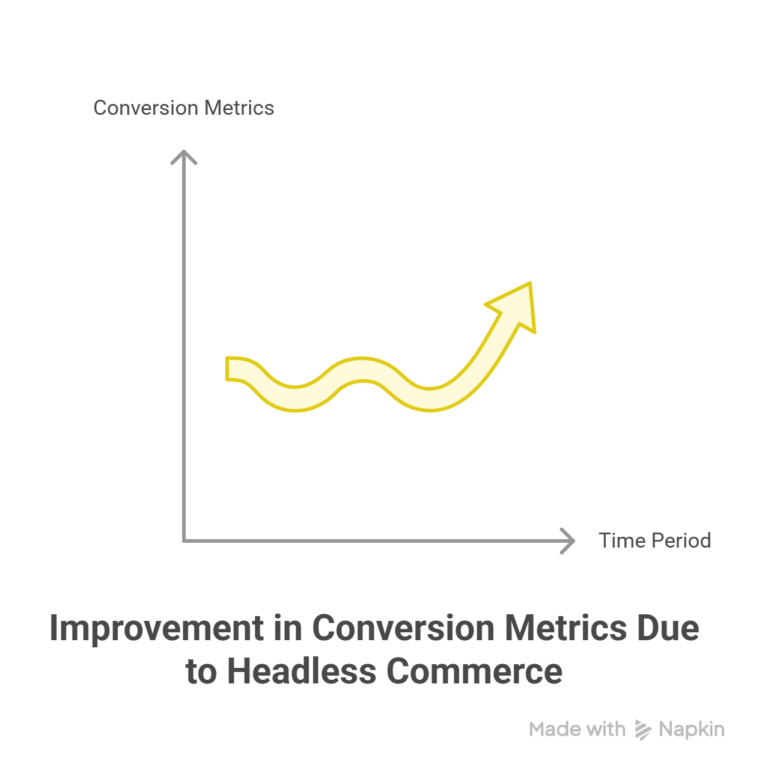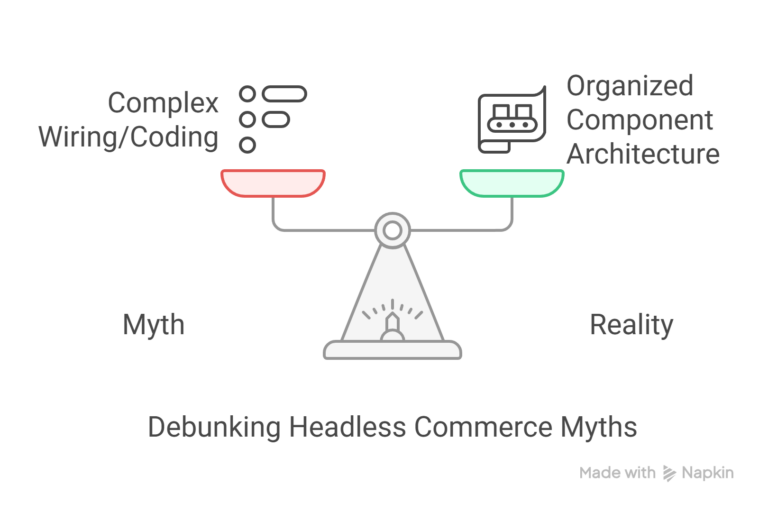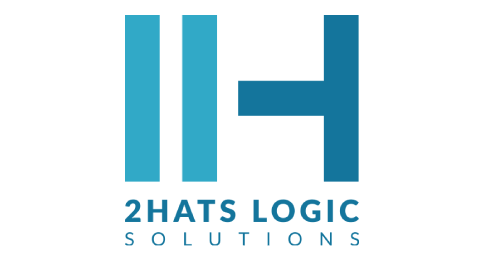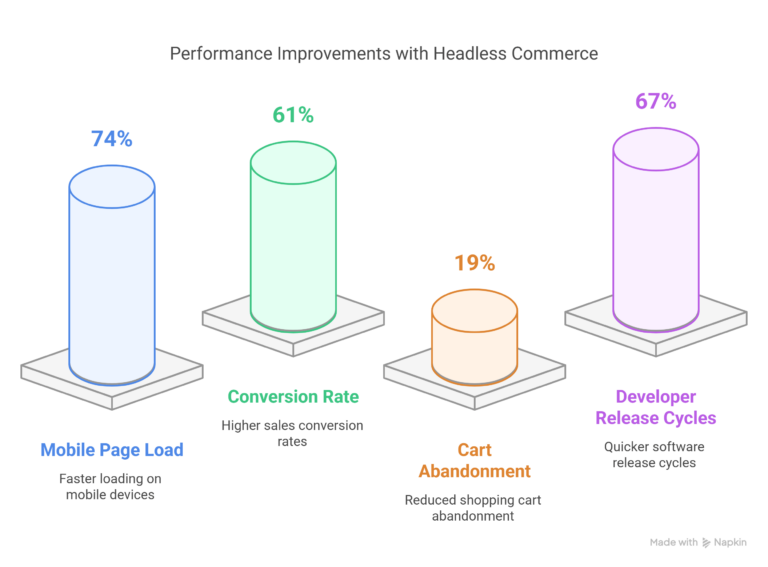Greetings! I'm Aneesh Sreedharan, CEO of 2Hats Logic Solutions. At 2Hats Logic Solutions, we are dedicated to providing technical expertise and resolving your concerns in the world of technology. Our blog page serves as a resource where we share insights and experiences, offering valuable perspectives on your queries.

QUICK SUMMARY
Headless commerce isn’t just for enterprises, doesn’t require starting from scratch, offers better content management for marketers, delivers measurable ROI, and represents the future of digital commerce. The myths holding businesses back from adoption are based on outdated information or misunderstandings.
Ever wondered why your e-commerce site feels clunky compared to those sleek, fast-loading stores you admire?
You’ve probably heard whispers about “headless commerce” but aren’t sure if it’s worth the hype or just another tech buzzword.
At 2HatsLogic, our team has guided dozens of businesses through this exact confusion, and sorting fact from fiction in the headless commerce space is precisely what our agency specializes in.
What is Headless Commerce?
Before diving into myths, let’s get on the same page. Headless commerce separates your front-end (what customers see) from your back-end (where data and business logic live). This decoupling gives you unprecedented flexibility to create unique shopping experiences across any touchpoint, from websites to mobile apps, voice assistants, and whatever comes next.
6 Headless Commerce Myths
Now, let’s bust some persistent myths that might be holding your business back.
Myth 1: “Headless Commerce Is Only for Enterprise Businesses”

The Truth: This is like saying smartphones are only for tech executives.
Many mid-sized businesses assume headless commerce requires enterprise-level resources. In reality, the headless approach scales beautifully for businesses of all sizes.
Real Example: One of our clients, a boutique home goods store with just 12 employees, saw a 43% increase in mobile conversions after going headless. Their previous monolithic platform couldn’t deliver the mobile experience their customers expected.
The beauty of headless is that you can start small, perhaps with just your mobile storefront, and gradually expand as you grow.
Tip: Consider starting with a focused headless implementation on your highest-converting channel before rolling out across your entire business. This “crawl-walk-run” approach reduces risk while delivering immediate benefits.
Myth 2: “Implementing Headless Commerce Is a Technical Nightmare”

The Truth: It’s more like assembling high-quality furniture than building a house from scratch.
While traditional implementations were complex, today’s headless commerce platforms offer pre-built components and simplified workflows that dramatically reduce technical complexity.
What People Fear: Endless custom code, hiring specialized developers, and months of development time.
The Reality: Modern headless platforms provide API-first architecture with robust documentation, SDKs, and pre-built integrations that accelerate development.
Case Study Comparison:
| Implementation Approach | Traditional Monolithic | Modern Headless |
|---|---|---|
| Time to Market | 6-12 months | 2-4 months |
| Developer Skillset | Platform-specific expertise | Standard web technologies |
| Ongoing Maintenance | Platform updates can break customizations | Frontend and backend evolve independently |
| Testing Complexity | Full-system testing required for changes | Components can be tested independently |

When we migrated from Magento to a headless solution for our jewelry client, we completed the project in half the expected time because developers could work in parallel on the front and back ends.
Myth 3: “Headless Commerce Means Starting From Scratch”
The Truth: It’s more about evolution than revolution.
One of the biggest misconceptions is that adopting headless commerce means throwing away your existing investments. In reality, the best implementations take an incremental approach.
Many of our clients maintain their existing systems while gradually moving customer-facing touchpoints to a headless architecture. This approach:
- Preserves your investments in backend systems
- Allows for testing and validation
- Spreads costs over time
- Reduces risk
Real-World Example: A fashion retailer we worked with kept their ERP and inventory management systems intact while implementing a headless storefront. They saw immediate performance gains without disrupting critical backend operations.
Your customers are already expecting the smooth experiences that headless enables. Are you ready to deliver? If yes??
Myth 4: “Content Management Is Harder With Headless Commerce”
The Truth: Modern headless systems give marketers MORE control, not less.

The early days of headless did present challenges for non-technical users. Today’s solutions have evolved dramatically.
What’s Changed:
- Headless CMS systems with intuitive interfaces
- Visual page builders with drag-and-drop functionality
- Preview capabilities across multiple devices
- Scheduling and workflow tools
Example: One of our clients, a specialty food retailer, empowered their marketing team to launch seasonal promotions 60% faster after going headless. Their previous system required developer intervention for even minor content changes.
The key is selecting the right headless CMS that balances flexibility with usability.
Myth 5: “Headless Commerce Is Just a Passing Trend”
The Truth: Headless architecture represents a fundamental shift in how digital experiences are built.
Remember when responsive design was considered optional? Headless commerce is following the same adoption curve, moving from innovative to essential.
Consider these market indicators:
- Major platforms like Shopify, BigCommerce, and Salesforce have all embraced headless approaches
- Investment in API-first commerce technologies has grown by 20% annually
- PWA and native app experiences (natural fits for headless) are driving significantly higher conversion rates
Pro Tip: When evaluating headless commerce, look beyond immediate needs to future capabilities. The real value comes from being able to quickly adapt to emerging channels and customer preferences without replatforming.
Myth 6: “The Benefits Don’t Justify the Investment”
The Truth: The ROI of headless commerce is measurable and compelling.
Many businesses focus solely on implementation costs without considering the full financial picture. Let’s break down the typical returns we’ve seen with our clients:
- Performance Gains: 40-80% improvement in page load speeds, translating to 15-30% higher conversion rates
- Developer Efficiency: 50% reduction in time to implement new features
- Channel Expansion: Ability to extend to new touchpoints at 1/3 the cost of traditional approaches
- Maintenance Reduction: 40% decrease in ongoing maintenance costs
Real Numbers: A mid-market electronics retailer we worked with invested $120,000 in their headless migration. Within 8 months, they recovered the entire investment through increased mobile conversions alone.

Before/After Comparison Table:
| Metric | Before Headless | After Headless | Improvement |
|---|---|---|---|
| Mobile Page Load | 4.2 seconds | 1.1 seconds | 74% faster |
| Conversion Rate | 1.8% | 2.9% | 61% higher |
| Cart Abandonment | 72% | 58% | 19% reduction |
| Developer Release Cycles | 6 weeks | 2 weeks | 67% faster |
The Bottom Line: Headless Is Here to Stay
The question isn’t whether headless commerce is right for your business; it’s how and when to adopt it. The flexible architecture, superior performance, and enhanced customer experience make it the clear path forward for businesses that want to remain competitive.
At 2HatsLogic, we’ve guided dozens of companies through successful headless implementations from planning and strategy to execution and optimization. Our approach focuses on practical solutions that deliver real business value, not just technical elegance.
Ready to explore how headless commerce could transform your business? We’d love to chat. Contact our team for a no-obligation consultation to see if headless is right for your unique situation.
FAQ
How long does it typically take to implement a headless commerce solution?
With the right partner, most businesses can implement their first headless touchpoint in 2-4 months. At 2HatsLogic, we've developed a phased approach that delivers value quickly while minimizing disruption to your existing operations.
Do we need to hire specialized developers for headless commerce?
Not necessarily. While headless architecture uses modern web technologies, many development teams can adapt quickly with proper guidance. Our clients often leverage their existing teams supplemented by our specialists during the transition period.
Can we still use our existing payment processors and fulfillment systems?
Absolutely! One of the strengths of headless architecture is its ability to integrate with your existing business systems through APIs. Most headless implementations preserve these critical backend connections.
How does headless commerce affect SEO?
When implemented correctly, headless commerce can significantly improve SEO performance through faster page loads, better mobile experiences, and more flexibility with content. In fact, many of our clients see organic traffic increases of 20-35% within six months of going headless.

Related Articles






